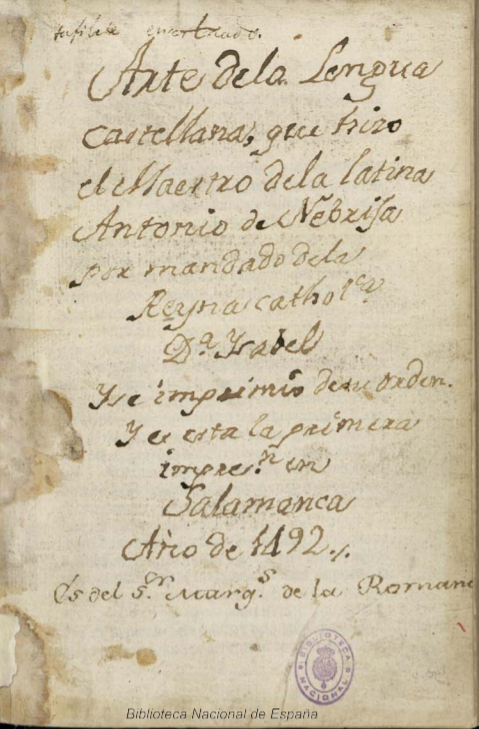
Libraries
Libraries
Gramática castellana
Elio Antonio de Nebrija’s work is the first grammar of Spanish and also the first grammar of a vulgar language printed in Europe. At that time, Spanish was not considered a “language of culture.” Although his Castilian Grammar is based on the model of the Introductiones latinæ (1481), it must be considered that a later edition of said work, at the request of Queen Elizabeth, appears the Latin text accompanied by its Spanish version (Introductiones latinæ contrapuesto el romance al latín, 1487). This first Hispanic grammar of 1492 obeys, therefore, to a majestic project to spread the language of the crown within the formal framework of classical grammars.
It is a book that reveals the complexity of the European linguistic idiosyncrasy at the very dawn of the modern era. This was the first grammar to consider the double path of diffusion of learning the Spanish language. It was revealed as a mother tongue and as an international language of interest to other nations. The first four chapters correspond to the learning of the language for natives («Spelling», «Prosody», «Etymology», «Syntax») and the fifth is aimed at foreigners: «Introductions of the Spanish language for those with a strange language they will want to deprender »
The path traced by Nebrija was, without a doubt, decisive for the later study of the Amerindians (from North America to South America). In the case of the Viceroyalty of Peru, the standardization of Quechua as a general language was decisive for evangelization and for the creation of a new Andean identity, forged from the 16th century to the present day.

